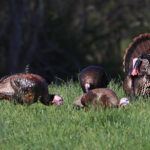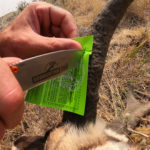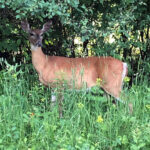When asked which bowhunts bring the most satisfaction, a good friend recalls two old does that cost him a shot at the bucks trailing them.
Somehow those does detected him 20 feet above in his portable treestand, and both fled instantly with the buck. Each time he switched to better-concealed treestands deeper in the woods, and arrowed those wary does the next time he saw them.
“Those does were among the cagiest whitetails I’ve ever hunted,” he said. “I knew them by sight. One had short ‘cubby’ ears and the other was missing half its tail. I just wish I figured them out earlier so they couldn’t run interference on the bucks trailing them. Older deer expect and look for danger from above. You have to climb higher, camouflage your silhouette, and set up where they don’t expect you.”
Predator-prey relationships are a never-ending cycle. Prey recognize threats, adapt and take evasive measures. Then the predator counters those moves and the cycle restarts.
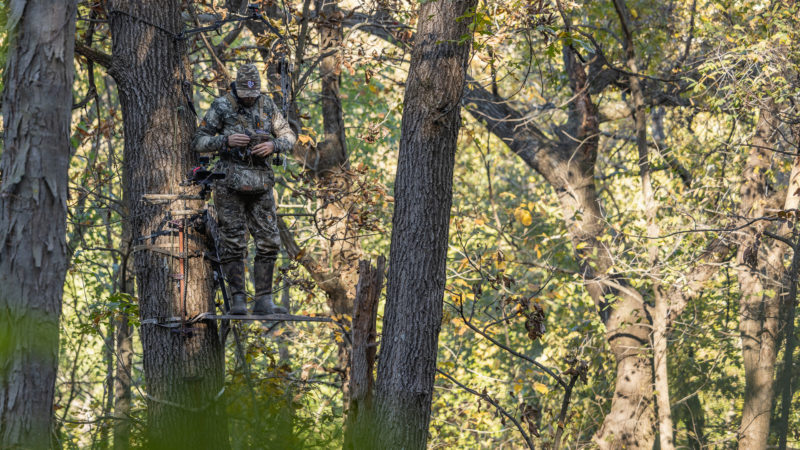
Are Today’s Whitetails Smarter?
Never underestimate a whitetail’s survival skills. Their ultra-sensitive ears and nostrils create a large defensive perimeter. And even though their eyes lack the color range and depth perception of a human’s, deer easily match our ability to spot motion.
How fast can whitetails adapt to threats and change behaviors? That varies by individual, herd and habitats. Most deer researchers think these are mostly learned behavior, but they don’t dismiss genetic links. John J. Ozoga, a researcher who spent 30 years studying deer for the Michigan Department of Natural Resources, thinks experience and genetics play roles.
“Deer are so genetically diverse that they quickly adjust to different foods, habitats and climate,” Ozoga said. “Fawns learn behavioral traits from their mother, and improve them as they mature. They could pass along a behavioral change genetically in response to hunting tactics. That’s not impossible.”
Is it possible to accelerate the learning process, whether it’s learned or inherited? Deer spend up to four months each year trying to detect and avoid human hunters, of which about 85% use treestands. That means deer get constant reminders to look up for danger.
Could those lessons be imbedded in history? After all, whitetails evolved alongside cougars, which can attack from above. Further, prehistoric hunters probably perched on overhead limbs for the same reason we do: to get closer to their prey.
“Whitetails were dealing with cougar predation in our Eastern forests long before European settlement,” said Professor Steve Demarais at Mississippi State University. “They’ve likely had a natural tendency to look up long before now. All we’re doing now is reinforcing it.”
In fact, the mid- to late 1900s were probably a brief moment in whitetail history when it didn’t expect danger from above. Deer were scarce in many regions 100 years ago, compound bows and portable treestands still 50 years into the future, and few large four-legged predators were present, on the ground or up in trees. When deer and bowhunter numbers boomed in the 1980s, whitetails went back on full alert high and low, 24-7.
Therefore, we shouldn’t be surprised to see whitetails scanning trees as they walk through the woods, especially when approaching feeding areas or other likely ambush sites. The more danger they encounter at a field’s edge, the more they’ll check the trees above.
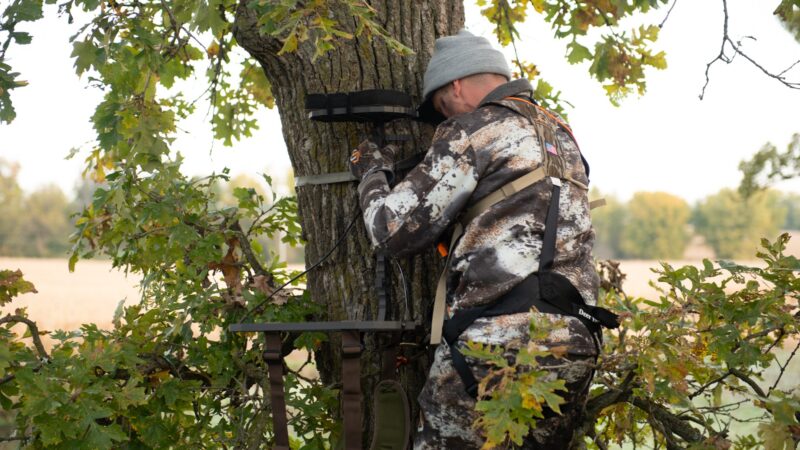
Deer aren’t programmed to just react to sights, smells or sounds from above. Maybe they instinctively anticipate it, and our favorite treestands increase their awareness. Karl V. Miller, a professor-emeritus at the University of Georgia, puts it this way: “Deer would have to be really stupid if they couldn’t learn something as simple as looking up for danger.”
Miller’s predecessor at U-Georgia, Professor Larry Marchinton, cites two factors at work. “The ‘cultural effect’ is when does teach things to their offspring, and those offspring turn around and teach it to their offspring,” he said. “As more hunters use treestands, deer naturally learn to look up and pass that defense to fawns and other deer.”
Marchinton said the second factor is “selection pressure,” or natural selection. Deer that don’t learn to look up get removed quickly from the gene pool in heavily hunted areas. Meanwhile, deer that often look up for danger are more likely to pass that capability to offspring. Fast-learning deer soon outnumber slow learners, and become increasingly hard to kill.
Avoiding Detection
Can savvy bowhunters foil deer by going higher yet? Many bowhunters prefer at least 18 feet of air beneath their stand, and some choose 25 feet as their minimum. But height isn’t the only factor.
Choose stand sites that exploit the whitetail’s weak 3-D vision. When deer see something suspicious, they snap their head back and forth to study it from several angles to compensate for their weak depth perception. It’s vital to choose setups that obscure your outline. Avoid trees that look like utility poles and highlight your silhouette. Look for two- or three-trunked trees that help you hide between their trunks. That’s especially important when trees shed their leaves. Other good setups have dense branches behind, below and above your stand. Conifers, or “evergreen” trees are especially good, but any dense, “branchy” background is better than open sky.
Another big factor is placing your treestand out of the deer’s line of sight. Try to stay within 15 to 25 yards of the expected ambush point while anticipating which directions deer will look as they draw near. Be especially picky on hillsides. Even if you’re 25 feet up a tree, a treestand on a steep hillside could put you at eye level when deer walk into bow range.
Likewise, if they come around a bend and you’re in their sightline on the trail’s outside corner, you better be made of stone. In most cases, you’ll be less visible on the inside corner of the bend, especially if it’s brushy. During your spring or preseason scouting, walk those sites and crouch often to see the surroundings from a deer’s point of view.
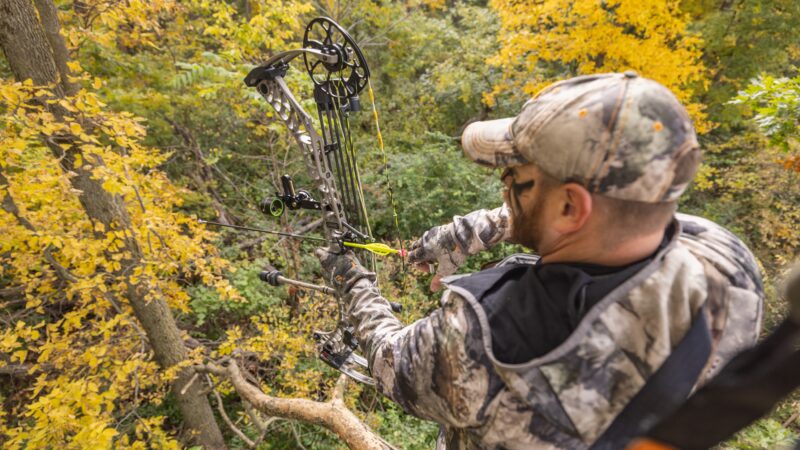
The Danger Zone
As deer make their final approach to crops, greenfields, food plots, or other feeding sites, they naturally slow down to survey what’s around them. Don’t be surprised if deer approach, scan their surroundings, and then trot or dart deep into the field before feeding. They’ve probably learned it’s dangerous to feed or linger near the field’s edge, said Grant Woods, a deer manager and researcher in southwestern Missouri.
“In most fields, deer consume food from the edge of the woods and work toward the center,” Woods said. “But I remember a place where we removed 30 to 50 deer each year with the bow and arrow. By mid-October it was hard to get a deer within bow range of trees bordering fields.”
Steve Shea, a deer manager and researcher in Florida’s Panhandle, notices similar patterns on properties he manages.
“Deer are much less wary along travel routes to and from feeding areas,” Shea said. “They move relatively quickly and don’t seem to scan the trees. But as soon as they near the food, they get very cautious, and their behavior changes.”
When that happens, try different trees, get higher off the ground, and consider ground blinds. Also try backing 100 yards into the woods and focusing on approach trails.
Expel the Teacher
At the same time, target the oldest, smartest does. “I identify specific does that seem to be overly cautious and have messed up some harvest opportunities on bucks,” Shea said. “I try to remove a buck’s best lookouts. I also avoid permanent stands. Deer know to look there first as they approach.”
Woods agrees. “If you have some 6-, 7- and 8-year-old does out there, they’re wise and make it difficult to kill anything nearby,” Woods said. “My theory is that you’ll change that group’s behavior by taking out old does. If all else fails, get out there during gun season and shoot them when they run out to the middle of the field. Bust up that learning cycle.”
Miller offered similar advice. “I had one doe that always looked up into a ladder stand to see if anyone was there,” he said. “I killed her with my bow from a climber 30 yards away. Until she was gone, there was no way to hunt there without getting busted.”
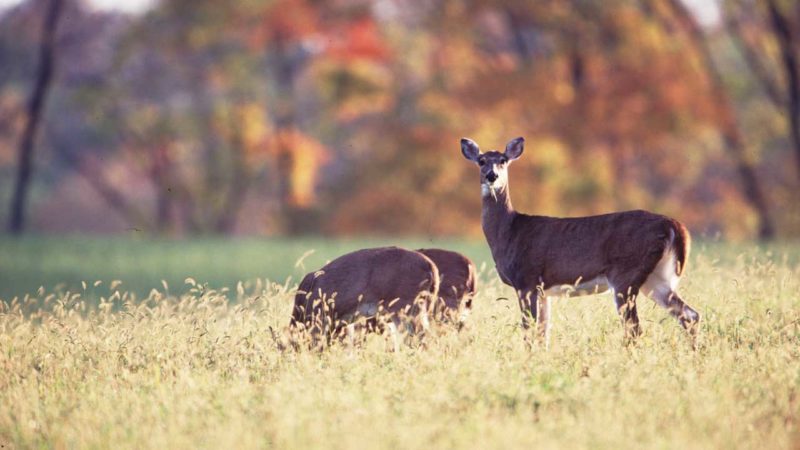
Conclusion
If you don’t care why deer do something, or how long they’ve been doing it, you’ll struggle to anticipate and recognize their behavioral changes. And the longer you’re predictable, the longer deer stay one step ahead of you.

 By
By 